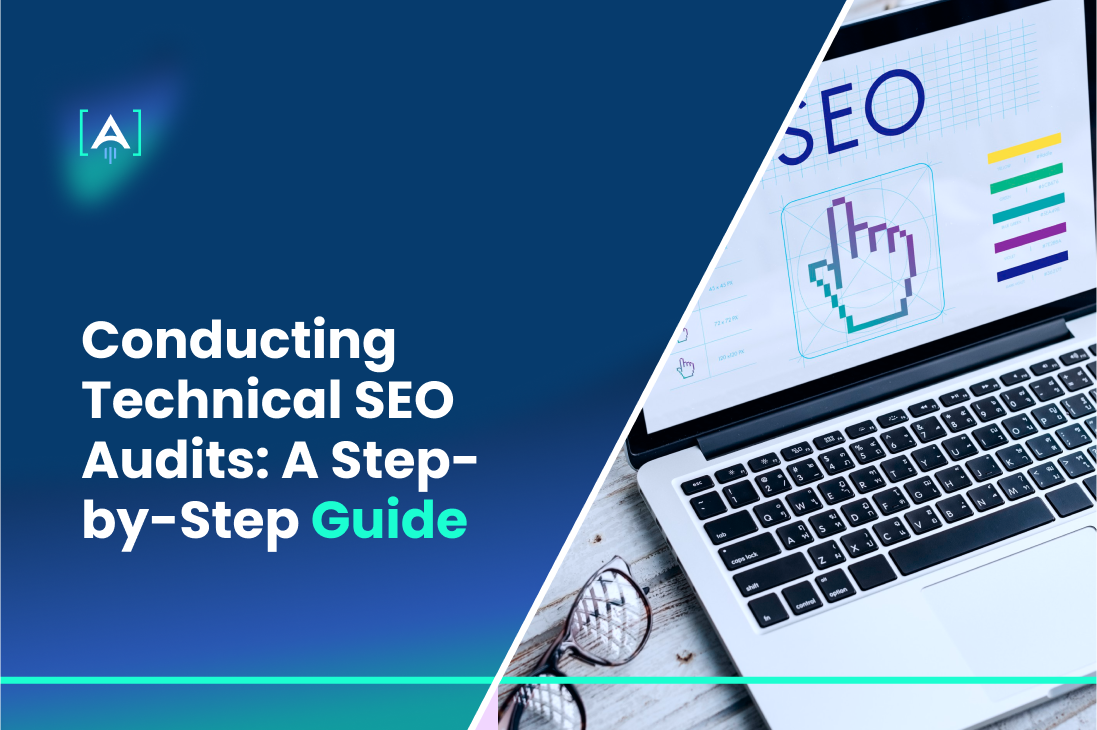If your website feels invisible to search engines, a thorough technical SEO audit might be exactly what you need to uncover the issues holding it back.
In the ever-evolving digital marketing field, mastering the technical SEO audit is essential for anyone looking to enhance their website’s visibility and performance.
According to Ahrefs, if Google can’t crawl or index your website, you can’t rank.
Another source, Semrush, notes that around 46% of marketers and business owners agree that SEO leads to success in content marketing; 47% said the same about audience research.
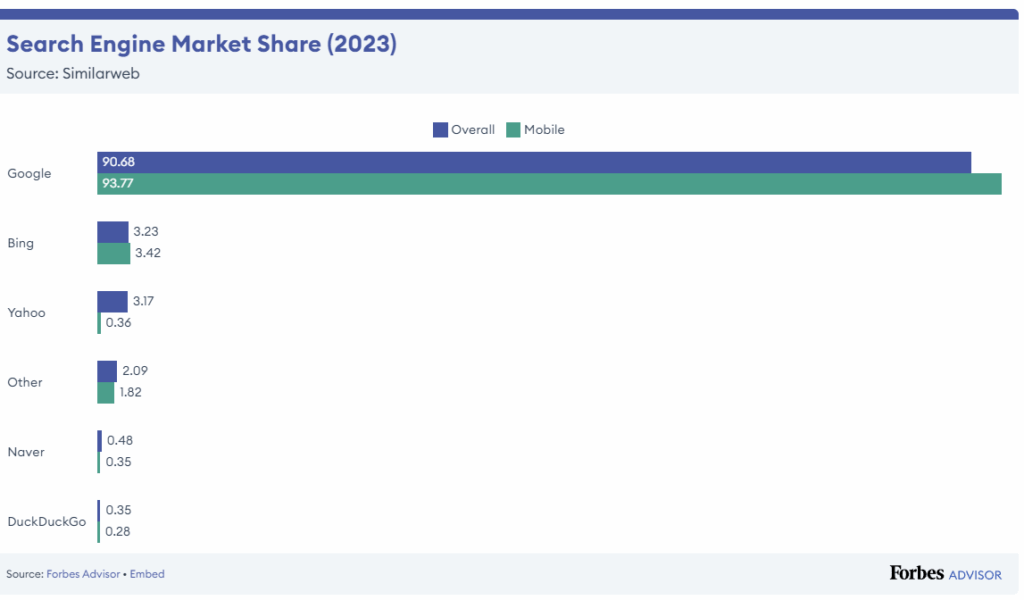
Source: Forbes
Consider how an SEO agency can help you climb the rankings in this situation.
In this guide, you will walk through the intricate process of conducting a thorough SEO audit, step by step.
Importance of Technical SEO Audit
In the digital age, ensuring your website meets the search engine standards required by search engines is crucial for visibility and success.
A technical SEO audit is a thorough evaluation of a website to ensure it is constructed and maintained in a way that search engines favor.
Conducting a website technical audit helps identify hidden issues such as slow loading pages, broken links, and duplicate content that may prevent your site from ranking.
Regular audits not only improve search engine visibility but also enhance user experience, making it easier for visitors to navigate and interact with your website.
Understanding Technical SEO Audits
A technical SEO audit focuses on analyzing the technical aspects of a website that influence its visibility in search engines.
This includes checking the website’s architecture, understanding its coding and structure, analyzing on-page elements, and ensuring compliance with the latest search engine guidelines.
A technical SEO audit service identifies issues that could be hindering a website’s search generative engine (SGE) performance and provides a roadmap for corrections and optimization.
Performing a SEO site audit helps identify issues that could hinder your site’s performance in search results, such as crawl errors, broken links, slow page speeds, or duplicate content.
Once these issues are uncovered, a clear roadmap can be created to correct them and optimize the website for both users and search engines.
Role of Advanced SEO and Programmatic SEO
Advanced SEO strategies, including programmatic SEO, play a significant role in modern technical SEO audits.
Programmatic SEO involves using software or platforms to automate the creation and optimization of large numbers of pages, making it particularly useful for websites with extensive product lists or content libraries.
This approach efficiently scales SEO efforts, especially when combined with AI in SEO, which can predict and execute SEO tasks based on data-driven insights.
Incorporating programmatic SEO into a website technical audit allows you to efficiently scale optimization efforts and maintain consistent quality across hundreds or thousands of pages. When combined with AI-driven insights, these strategies can help predict and execute necessary SEO improvements, making your SEO site audit more effective and actionable.
AI in SEO and Technical SEO Audit
Artificial intelligence is revolutionizing how SEO audits are performed. AI tools can rapidly analyze massive amounts of data and suggest optimizations more accurately and at a scale not humanly possible.
For instance, AI can help identify content opportunities or technical flaws that might not be evident without deep data analysis.
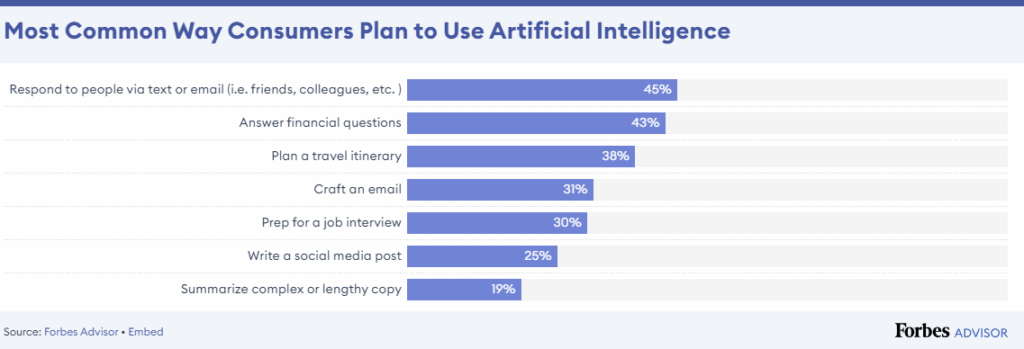
Source: Forbes
As AI advances, its integration into SEO practices is becoming necessary for staying competitive in search rankings.
Incorporating AI into your technical SEO audit can help quickly identify crawl errors, content gaps, and performance issues that might otherwise go unnoticed. Using AI tools during a website technical audit or SEO site audit ensures faster, more accurate insights, allowing you to prioritize fixes that will have the greatest impact on rankings and user experience.
Importance of Google Search Console and Google Analytics
Tools like Google Search Console and Google Analytics are indispensable for technical SEO audits. Google Search Console provides direct insights from Google about how the search engine views your website.
This includes information about crawl errors, mobile usability, and how your content is indexed. Google Analytics, on the other hand, offers data about website traffic, user behavior, and conversion metrics.
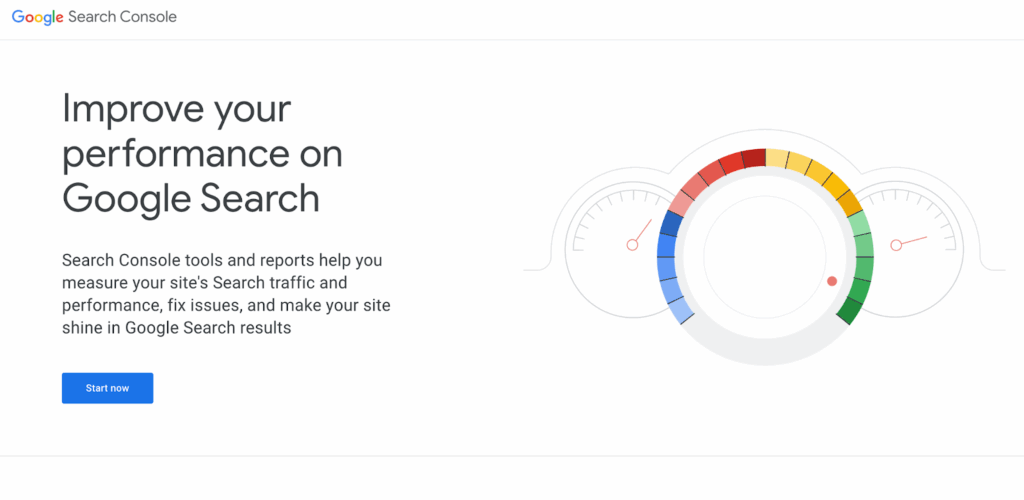
Source: Google Search Console
Together, these tools provide a comprehensive view of your website’s health from a search engine’s perspective and user interaction, which are critical data points for any technical SEO audit service.
Preparing for Your Technical SEO Audit
Embarking on a technical SEO audit requires a well-planned approach with the right set of tools and resources to thoroughly analyze and enhance your website’s interaction with search engines.
Knowing which tools and methods to use for a thorough technical SEO audit makes it much easier to handle the challenges of modern SEO. This includes:
- Core Web Vitals – improving page speed, interactivity, and visual stability
- International SEO – optimizing your site for different countries and languages
- Future SEO trends – staying prepared for changes in algorithms and user behavior
Essential Tools and Resources
To perform a technical SEO audit effectively, several advanced tools are necessary.
These tools help identify issues that may not be apparent but significantly impact a site’s performance in search engine results.
Google Search Console
A fundamental tool for anyone looking to perform a technical SEO audit service is Google Search Console. This tool offers direct insights from Google and is invaluable for understanding how search engine crawlers perceive the site.
Google Search Console helps monitor and maintain the site’s presence in Google Search results by providing data on how Google indexes and crawls a website.
It also highlights issues related to indexing, site speed, and security that can affect your E-E-A-T Google (Expertise, Authoritativeness, Trustworthiness) score, which is crucial for achieving high rankings.
Screaming Frog SEO Spider
Screaming Frog SEO Spider is a desktop program used by SEO experts worldwide. It suggests a detailed analysis of the entire website simultaneously, mimicking how search engines crawl your site.
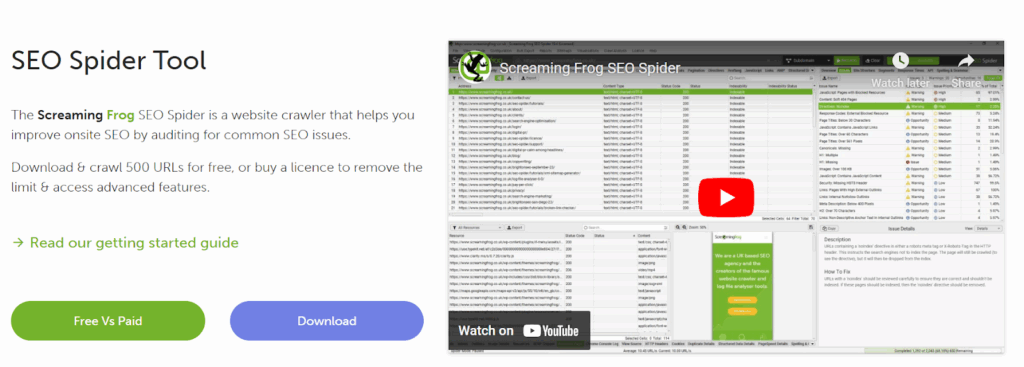
Source: Screaming Frog
It can detect broken links, analyze page titles and metadata, generate sitemaps, and find duplicate content. It also allows you to check your website from the perspective of different international locations, which is essential for global businesses focusing on international SEO.
Ahrefs or SEMrush
Ahrefs and SEMrush are powerful tools for an SEO audit. Both offer extensive functionalities, including keyword tracking, backlink analysis, and competitor insights. Ahrefs provides a detailed content gap analysis, which can be crucial to enhancing your SEO strategy.
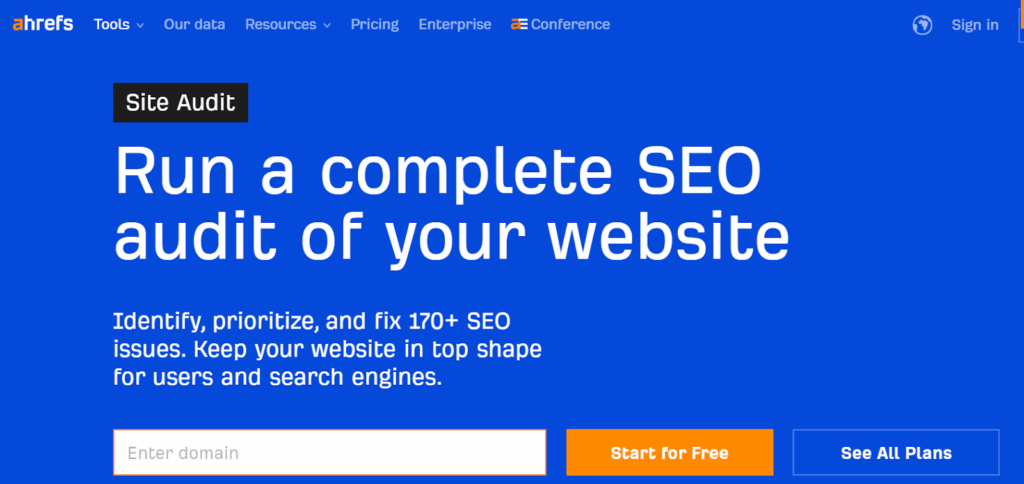
Source: Ahrefs
SEMrush, on the other hand, offers features like the SEO Content Template, which helps create SEO-friendly content based on the top 10 ranking pages for your target keywords. Both tools are instrumental in exploring SEO automation possibilities.
Utilizing SEO Automation
Incorporating SEO automation into the audit process is crucial for efficiently handling large data sets and repetitive tasks.
Tools like SEMrush and Ahrefs offer automated reporting and alerting features that keep you updated on your site’s performance in real-time. Automation speeds up the process and reduces the likelihood of human error.
Adapting to Future SEO Trends
Staying ahead in SEO means preparing for future changes in search algorithms and user behavior. A technical SEO audit is the perfect time to evaluate how ready your website is. Key areas to consider include:
- Mobile optimization : Is your site fully responsive and easy to use on all devices?
- Page speed : How quickly does your site load across different platforms?
- Site navigation : Can users and search engine crawlers easily find and access important pages?
- Content structure : Are your pages organized in a way that supports future SEO strategies?
By reviewing these areas during your website technical audit or SEO site audit, you can make proactive improvements that keep your site competitive.
Focusing on Core Web Vitals
As part of any technical SEO audit, special attention should be given to Core Web Vitals, a set of specific factors that Google considers essential in a webpage’s overall user experience.
Slow page loading, unresponsive elements, and unstable visuals can frustrate users and hurt your search rankings. Tools like Google’s Chrome User Experience Report and PageSpeed Insights can help you measure and improve these key metrics.
By preparing thoroughly and selecting the right tools for your technical SEO audit, you can ensure that your site meets the current benchmarks for SEO performance and is poised to adapt to future changes in the search engine optimization landscape.
Setting Your Audit Goals
Setting clear, measurable goals is crucial before tackling the complexities of a technical SEO audit. Therefore, these goals will guide your audit process, ensuring that every aspect examined contributes directly to your overarching objectives.
Whether you’re performing this audit in-house or using a technical SEO audit service, defining what you hope to achieve will streamline your efforts and enhance the effectiveness of your results.
Here’s some KPIs.
Identifying Key Performance Indicators (KPIs)
Key Performance Indicators (KPIs) are vital metrics used to assess the success of your SEO efforts and are crucial to establish before beginning your audit. Here’s a list of essential KPIs to consider when conducting a technical SEO audit:
- Website Speed Optimization:
- Page Load Time: How quickly does your web page load from when a user clicks the link until the entire page is displayed on their screen?
- Time to First Byte (TTFB): How fast does your server respond to a request?
These speed-related metrics are crucial because they directly affect user experience and search engine rankings. Tools like Google’s PageSpeed Insights can provide detailed reports and recommendations for improvement.
- Internal and External Links:
- Total Number of Internal Links: This metric helps you understand your site’s link structure and ensure that important pages are emphasized accordingly.
- External Link Quality and Quantity: It is crucial for domain authority to monitor the quality and relevance of external sites linking back to you.
Auditing your internal and external links ensures your site architecture is optimized for users and search engines.
- Natural Language Processing SEO:
- Keyword Relevance and Context: How well does your content match the intent of your target audience?
Google Increases the Use of Natural Language
With Google’s increasing use of natural language processing, it is key to ensure your content aligns closely with user intent and conversational language.
- Schema Markup SEO:
- Rich Snippets Performance: Are your pages enhanced with schema markup to stand out in SERPs with rich snippets?
Schema markup is an essential tool that aims search engines understand the context of your content, potentially improving its visibility.
- SEO Mobile Optimization:
- Mobile Usability Errors: Are there elements on your site that do not work well on mobile devices?
- Mobile Page Load Speed: Since mobile-first indexing is now the norm, how fast do your pages load on mobile devices?
Optimizing for mobile is non-negotiable, as a prominent portion of web traffic comes from mobile devices.
- Duplicate Pages:
- The number of Duplicate Content Issues: This involves identifying and resolving duplicate content issues that can dilute your SEO efforts.
Tools like the Screaming Frog SEO Spider, which scans for duplicate pages, help consolidate SEO strength and avoid search engine penalties.
- URL Inspection Tool:
- Indexation Status: Does Google index each URL on your site?
- Last Crawled Date: When did a search engine crawler last visit each URL?
The URL Inspection tool in Google Search Console is invaluable for checking the Google-indexed status of any URL on your web property.
Setting the right KPIs for your technical SEO audit involves understanding your website’s current performance and anticipating how it can be improved to meet future SEO standards.
These indicators will help track the success of your audit efforts and guide your ongoing SEO strategy. Focusing on these critical areas ensures that your website meets SEO benchmarks and offers an excellent user experience, driving better engagement and conversions.
Crawling Your Website
Crawling is one of the first and most important steps in a technical SEO audit. It lets search engines explore your website, understand its structure, and index your pages. It also helps you find issues that can hurt your site’s performance in search results, such as:
- Broken links
- Duplicate content
- Slow-loading pages
- Missing internal links
A good crawl also shows how search engines like Google and Bing see your site. Using structured data and linking to relevant pages can improve both SEO and user experience.
How to Use Crawling Tools
Professional crawling tools are essential for a website technical audit. They simulate how search engines navigate your site and help you:
- Identify technical issues quickly
- Spot content problems
- Make sure your site is easy for bots and users to navigate
Performing a proper crawl is a key part of a full SEO site audit and helps you prioritize fixes that will boost rankings and usability.
Common Crawling Issues and How to Address Them
During the crawl, several issues can surface that may need immediate attention. Addressing these effectively can greatly enhance your site’s SEO performance.
Broken Links
Problem: Broken links lead to non-existent or inaccessible pages.
They provide a poor user experience, waste link equity, and prevent search engine bots from fully indexing your site.
Solution: Use your crawling tool to identify all broken internal and external links. Once identified, either fix the links by pointing them to the correct URL or remove them if they are no longer relevant. Maintaining clean and functional internal linking is crucial for SEO.
Duplicate Content
Problem: Duplicate content occurs when multiple pages on your site have the same or very similar content. This can confuse search engines as they attempt to determine which version of the content is most relevant, potentially diluting your SEO efforts.
Solution: The crawling tool can identify duplicate content issues across your site. Resolve these by using canonical tags to point search engines to the preferred option of the content. Alternatively, revise the content to make each page unique or merge similar pages to consolidate information and link equity.
Enhancing Crawling Efficiency
To guarantee your website is effectively crawled and indexed by other search engines and not just Google, consider the following additional tips:
- Optimize Page Speed: Faster loading times encourage search engine bots to crawl more of your pages. Use tools like Google PageSpeed Insights to identify and solve issues slowing down your site.
- Improve Site Structure: A logical, hierarchical site structure with clear navigation helps search engines and users find content more efficiently. Ensure that your most important pages are a few clicks away from the homepage.
- Utilize Bing Webmaster Tools: In addition to Google Search Console, use Bing’s Webmaster Tools to gain insights into how Bing’s search engine bots interact with your site, which can differ from Google’s interactions.
By understanding how to leverage crawling tools and target common issues, you can ensure that your technical SEO audit is thorough and effective, setting the foundation for improved search engine visibility and website performance.
Assessing On-Page Elements
A technical SEO audit includes a careful review of your on-page elements. These elements affect how both search engines and users see your website.
Key on-page components to check include:
- Title tags – Are they unique, descriptive, and keyword-optimized?
- Meta descriptions – Do they summarize the page and encourage clicks?
- Headers – Are they structured to make content easy to scan?
- Content quality – Is the content clear, relevant, and aligned with user intent?
Reviewing these elements ensures they work together to improve your SEO performance and enhance the user experience. Performing this check as part of a website technical audit or SEO site audit helps identify areas that can boost rankings and engagement.
Title Tags and Meta Descriptions
Title tags and meta descriptions are essential elements in SEO as they provide the first impression of your web page in search engine results pages (SERPs).
These components play a key role in click-through rates and tell search engines and users what to expect from the page’s content.
- Title Tags: Each page’s title tag should be unique and include main keywords relevant to the page’s content. The optimal length is 50-60 characters to ensure the entire title is visible in SERPs.
- Meta Descriptions: While not directly a ranking factor, meta descriptions should effectively summarize the page content and include call-to-action phrases to improve click-through rates. They should be between 150 and 160 characters to avoid being cut off in SERPs.
Both elements should accurately reflect the page’s content and include targeted keywords. During a technical SEO audit, ensure each page’s title tag and meta description are not only optimized for keywords but also compelling enough to draw in users.
Headers and Content Optimization
Well-structured content with strategically placed headers is essential for both user experience and search engine indexing. Headers help organize content in an easy-to-read format, making it easier for users to navigate and for search engines to get the main topics of a web page.
Using Keywords Effectively
Keywords are the backbone of SEO content strategy. However, their effective use extends beyond mere inclusion.
Key tips for using keywords correctly include:
- Match user intent – Ensure your keywords align with what people are actually searching for.
- Use variations naturally – Include synonyms and related terms, such as website technical audit or SEO site audit, where relevant.
- Place keywords strategically – Include them in titles, headers, meta descriptions, and within the first 100 words of your content.
- Avoid keyword stuffing – Use keywords in a way that reads naturally for users and makes sense contextually.
- Focus on readability – Break content into short paragraphs and use formatting (bold, bullets) to make keywords stand out without overwhelming the reader.
Proper keyword usage ensures your pages are optimized for search engines while remaining engaging and readable for users.
Improving Readability and Engagement
Content readability is crucial for keeping users engaged and reducing bounce rates, which can indirectly influence SEO rankings:
- Clear, Concise Language: Use clear language that is easy to understand. Break down complex ideas into manageable chunks to keep readers interested.
- Formatting for Emphasis: Use bold, italics, and bullet points to highlight important information and make the text easier to scan.
- Interactive Elements: Incorporate multimedia like images, videos, and infographics to break up text and add visual interest, which can increase the time users spend on your site.
- Actionable and Informative Headers: Structure your content with headers that guide users through your content. Each header should offer value and entice the reader to continue.
During a technical SEO audit, assess how many pages effectively utilize these on-page elements. Check if there’s a consistent approach to using title tags, meta descriptions, keywords, and content formatting across the site.
Review if URL parameters are used wisely without causing duplicate content issues, ensuring clean and efficient URL structures.
A technical SEO audit service can dramatically improve a site’s usability and search engine visibility by focusing on these on-page elements, paving the way for better user engagement and higher rankings.
Partner with [A] Growth Agency For Conducting Technical SEO Audit
Your technical SEO audit isn’t just a report; it’s a roadmap to unlock your website’s true potential.
Now that you clearly understand your technical strengths and weaknesses, it’s time to take action!
[A] Growth Agency will help you to prioritize and implement the identified improvements.
Our experienced marketers will benefit your search rankings climb, organic traffic surge and user experience soar.
We believe in the power of data to inform and drive every strategy, ensuring our actions are as effective as they are innovative.
Moreover, our strategies are tailor-made, and we’re not afraid to experiment to find the best path forward.
If this is for you, then go ahead!
